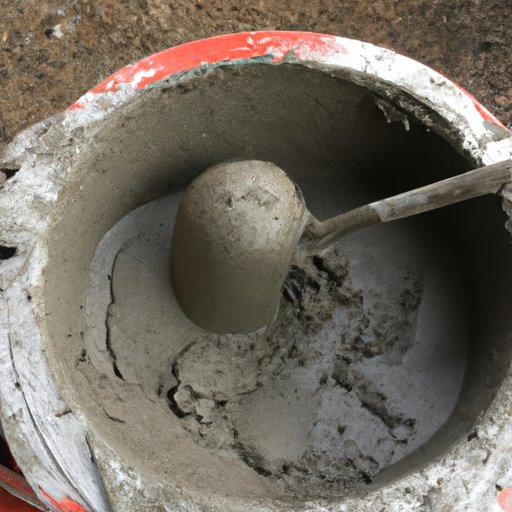Introduction
Mortar is a paste-like material that is used to bind building blocks such as bricks, stones, or concrete together. It is a crucial component of any construction project and is used in both interior and exterior applications. Mortar has been used for centuries to construct walls, pathways, and other structures and is still an important part of today’s modern construction projects.
There are several types of mortar that can be used in construction projects, including masonry, lime, and cement mortars. Each type of mortar has its own unique properties and uses, so it’s important to understand which type is best suited for the job. Masonry mortars are used to bond together masonry units such as brick, stone, or tile. Lime mortars are typically used for older buildings and are made from a mixture of sand and hydrated lime. Cement mortars are the most common type of mortar and are made from a mixture of portland cement, sand, and water.

The Components of a Mortar and How They Work Together
Mortar is composed of four main ingredients: cement, sand, water, and additives. The cement acts as the binding agent and gives the mortar strength and durability. Sand provides stability and helps to reduce shrinkage and cracking. Water is added to the mix to activate the cement and create a workable paste. Additives can also be added to the mix to improve performance, such as air entraining agents and water repellents.
When these ingredients are combined, they form a paste-like material that can be easily applied to surfaces. Once the mortar is applied, it starts to dry as the water evaporates and the cement begins to harden. As the cement hardens, it forms a strong bond between the masonry units, creating a durable structure that will last for many years.
A Step-by-Step Guide to Mixing and Applying Mortar
Mixing and applying mortar correctly is essential to ensure a successful construction project. Here is a step-by-step guide to help you get started:
1. Prepare the area for mixing mortar by clearing away debris, wetting down the surface, and pre-soaking the sand.
2. Measure out the appropriate amounts of each ingredient, following the manufacturer’s instructions.
3. Place the dry ingredients into a bucket and slowly add water, mixing until the desired consistency is achieved.
4. Apply the mortar to the surface with a trowel.
5. Allow the mortar to dry before continuing with the construction project.
Benefits of Using Mortar in Construction Projects
Mortar is a versatile material that offers many benefits when used in construction projects. Here are some of the key advantages of using mortar:
Durability and Strength: Mortar provides excellent long-term durability and strength, making it ideal for constructing walls, pathways, and other structures. According to a study conducted by the National Institute of Standards and Technology, mortar has a compressive strength of up to 2,500 psi (pounds per square inch), which makes it one of the strongest materials available for construction projects.
Versatility: Mortar can be used for a variety of applications, from simple repairs to large-scale construction projects. It can also be used in both interior and exterior applications, making it a great choice for any construction project.
Cost Savings: Mortar is relatively inexpensive compared to other construction materials, making it a cost-effective option for many projects. In addition, it is easy to use and requires minimal maintenance, which can further reduce costs over time.
Conclusion
Mortar is an essential component of any construction project. It is a versatile material that offers many benefits, such as durability, strength, versatility, and cost savings. With proper preparation and application, mortar can be used to create strong and durable structures that will last for many years. By understanding the components of mortar and following the steps outlined above, you can ensure a successful construction project.
(Note: Is this article not meeting your expectations? Do you have knowledge or insights to share? Unlock new opportunities and expand your reach by joining our authors team. Click Registration to join us and share your expertise with our readers.)
